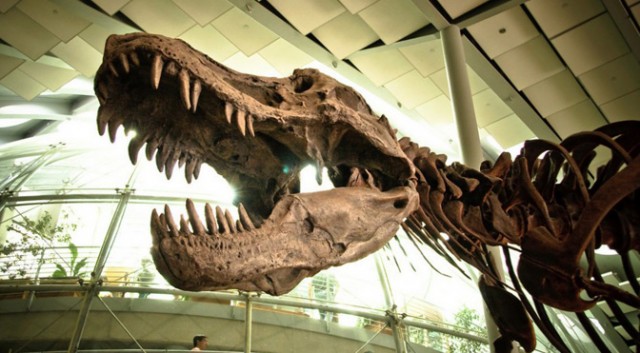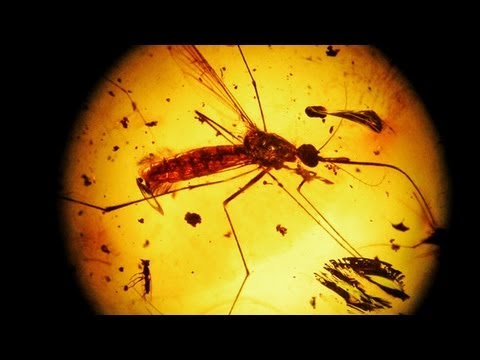What do scientists do to revive dinosaurs?
The resurrection of dinosaurs is extremely difficult and unlike what we saw in the movie.
How to bring dinosaurs back from the dead?
In the newly released Jurassic World, we see scientists revive an extinct animal by rebuilding the genetic sequence from fossil specimens. The story may sound like it is only in movies, but with the development of science and especially genetic engineering, the revival of an extinct animal can become a reality. Even if that animal is a dinosaur, who once dominated the Earth before humans.
Scientists have come closer to reviving another extinct animal, which is the mammoth . Scientists have successfully rebuilt mammoth genomes, with fossils preserved very well in thick snow. As a result, they found a blood sample that was considered to be the most perfect.

Can humans revive this animal?
Therefore, the resurrection of dinosaurs based on their genome restoration is entirely possible. However, it will not look like what we see in the movie Jurassic Park or Jurassic World. Filmmakers are just trying to make the plot a bit logical and scientific. But in fact to revive dinosaurs will need other methods.
Starting from the DNA sequence
In order to revive a dinosaur, it is imperative that we have its DNA sequence . However, things are not as simple as taking blood samples of dinosaurs inside a mosquito preserved in amber fossils. The story in the film is not a scientific basis and is set up by filmmakers to help the story sound reasonable.

DNA cannot last too long, so finding DNA from these fossils is very difficult.
In fact, there are two ways of obtaining DNA samples of dinosaurs, one is from the dinosaur bone fossil specimen and the other is from the DNA samples of later evolutionary species.
Scientists are quite close to the first way, when a very important discovery has recently been made. It was the first time scientists had found dinosaur blood samples from fossils, although the blood sample was incomplete. And scientists have yet to get dinosaur DNA from this blood sample.
In the second way, dinosaur DNA sequences can be rebuilt from later evolutionary species. Typically birds , animals are considered descendants of dinosaurs. Scientists will have to rely on bird DNA, then rebuild these genes based on retaining the remaining dinosaur genes and replace the evolved genes.

Scientists have found a gene that regulates evolution from dinosaurs to birds.
Earlier this year, scientists found a gene that regulates evolution from a dinosaur's mouth to a bird's. From there, they can reconstruct the head of the dinosaurs based on changing the genome of birds. A big step helps us have more hope to revive dinosaurs.
However, there is still a lot to do, because it will be difficult to build the complete genome of the dinosaurs. Unlike mammoths, fossil samples of this species are very well preserved under very low temperatures of snow and ice.
Use the genes of other animals
This is exactly how scientists in Jurassic World used to compensate for the missing parts of the dinosaur DNA sequence. Using the genes of some other animals is not too fictitious, but it is not easy.

Combining genes of these species is not simple.
Not using any animal genes can be incorporated into the dinosaur DNA sequence that we want to revive. In the film we see that the dinosaur Indominus rex has special abilities such as camouflage or body temperature modification, based on the genetic implant of some other animals that have these abilities.
However, it is very difficult to happen, scientists believe that using reptile genes will be more reasonable to compensate for the missing parts of the dinosaur DNA sequence. However, we will never create a complete dinosaur like nature did tens of millions of years ago.
After having the complete DNA sequence
Suppose we somehow recover the most complete DNA sequence of a dinosaur. So what is the next job? It is to find an animal capable of being a 'mother dinosaur'.
Current cloning techniques replace embryos and genetic material in an embryonic egg cell that scientists create based on existing DNA. After that, the egg cell will be put into a female's body, the later development is like a natural embryo.

We need a "mother dinosaur" to be able to create a new generation of dinosaurs.
However, we do not have a mother dinosaur to transplant artificial egg cells into it. In the film, scientists implant the genome into ostrich egg cells, although birds are descendants of dinosaurs, but that is not feasible.
For mammoths , scientists can transplant egg cells into an Asian elephant today. Because they belong to the same species, although the success rate is not 100%.
Therefore, this is the most difficult stage in the process of reviving a dinosaur. Scientists have not been able to find an animal that qualifies to transplant egg cells into its body. Because these cells, after being implanted into the body of that animal, will continue to undergo a development process influenced by mitochondria. Causing egg cells to have the genetic characteristics of the mother.
Interim
Thus, resurrecting dinosaurs is extremely difficult and unlike what we saw in the movie. Even after recovering the complete DNA sequence of the dinosaurs, it only helps scientists understand more about this animal and not enough conditions to bring them back from the dead.
However, it may also be a blessing, since reviving an extinct animal can cause many problems that we did not anticipate, not to mention the moral issue of cloning animals. object. However, studying dinosaur fossils is still an interesting and important work for archaeologists. Not only are we looking towards the future, but we also need to know how the past has taken place. How to answer the question of how the universe and people have been formed?
- Earth prospect when dinosaurs existed to modern times
- What will the world be like if dinosaurs and mammoths revive?
- 10 weird, hard to imagine dinosaurs
- Arctic dinosaurs are only 20 years old
- Russian scientists found new dinosaurs in Kemerovo, Siberia
- Find new dinosaurs that have crests like chickens
- The predatory dinosaur has four wings
- How to know the true form of dinosaurs when they become extinct for hundreds of millions of years?
- Discover strange monster dinosaurs
- Dinosaurs heat the Earth?
- Can still revive the dead
- T-rex tyrant dinosaurs also know 'love' - the shocking study of scientists
 Why do potatoes have eyes?
Why do potatoes have eyes? 'Tragedy' the world's largest carnivorous life: Death becomes ... public toilet
'Tragedy' the world's largest carnivorous life: Death becomes ... public toilet Tomatoes were once considered 'poisonous' for 200 years
Tomatoes were once considered 'poisonous' for 200 years Detecting microscopic parasites on human face
Detecting microscopic parasites on human face